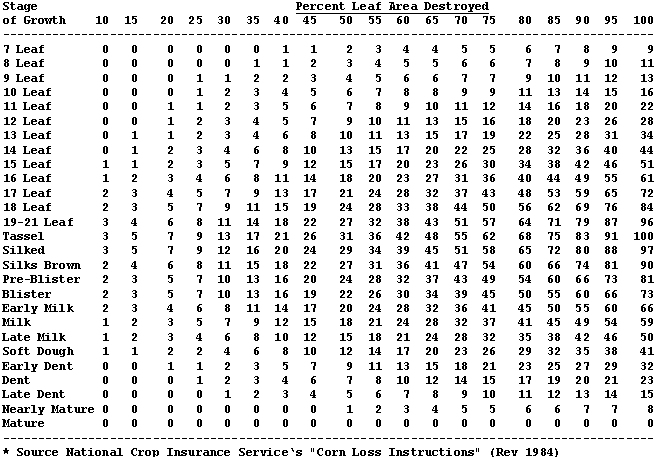
June 19, 2009
Field Crops 28.492 - 66
Corn Response to Hail Damage and Short-term Flooding
Joe Lauer, Corn Agronomist
Yesterday and over the previous week, storms caused scattered hail damage in central
Wisconsin and short-term flooding in south eastern Wisconsin. Most of the crop was
at V7 or less when these storms moved through Wisconsin. We are at the point where
there are few planting/replanting options available for corn. We might still be
able to plant other crops, but there are few viable good alternatives. The keys
to storm related damage of crop fields are to: 1) be patient, 2) determine the crop
growth stage, and 3) assess plant health accurately.
After a storm event we need to be patient and let plants respond. Plants can usually
survive short periods of flooding of less than 48 hours (Wenkert et al., 1981).
Likewise hail damage is minimal on plants less than V7 [Table 1 derived from Vorst
(1990)]. Within a few days growth should occur within plant whorls. New leaves will
become visible quickly within a couple of days if air temperature is warm. Now is
a good time to assess the plant growth stage. Crop insurance damage charts are based
upon the stage of crop development, so recording the date of the storm event and
the correct stage of development is key to assessing damage. To assess whether the
plant is healthy the growing point needs to be observed. Look for color other than
a healthy cream or light yellow. The first signs of damage on a growing point are
a change to a light red or brown within about 4-6 days. If the growing point changes
color, then the plant will likely not yield well and may even die.
To assess plant stands that have been damaged and whether a replant or late-planting
may be needed see Corn Replant/Late-Plant Decisions
in Wisconsin (UWEX Bulletin A3353).
Table 1. Yield impact of plant leaf defoliation on corn yield at different stages
of development.

Literature Cited
Vorst, J.V. 1990. Assessing Hail Damage to Corn. National Corn Handbook NCH-1:4
pp.
Wenkert, W., N.R. Fausey, and H.D. Watters. 1981. Flooding responses in Zea mays
L. Plant Soil 62:351-366.